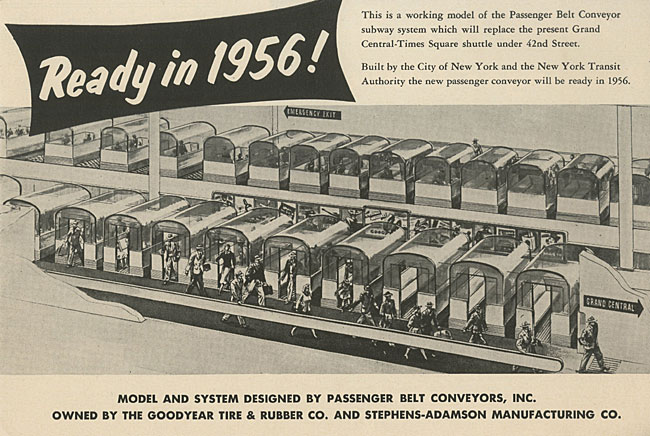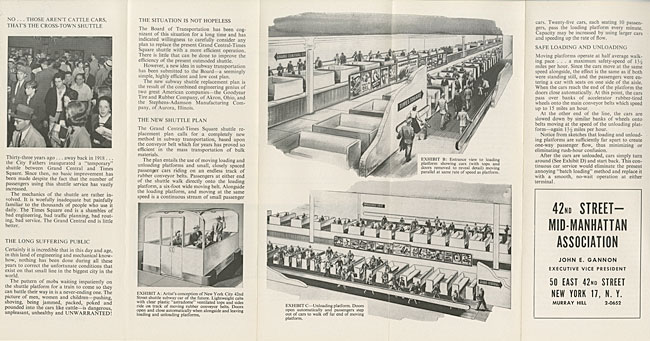Questionable ideas in transportation
Tuesday, May 21, 2019 by
Most New Yorkers are familiar with the 42nd Street Shuttle that runs between Times Square and Grand Central, beneath 42nd Street. However, most don’t know that in 1951 a “Carveyor” system was proposed to replace the shuttle and alleviate crowding and cross-town congestion. The Manuscripts and Ephemera department includes a collection of papers from the 42nd Street Midtown Association, several folders of which pertain to the proposed “Carveyor” shuttle.
The Grand Central/Times Square Shuttle began operating in 1918 on a portion of track that was originally part of New York City’s first subway line. Although the line runs just over 2,400 feet, it is heavily used and located in one of the city’s busiest areas. In 1951, the Goodyear Tire and Rubber Company and Stephens-Adamson Manufacturing Company put their engineering and manufacturing brains together and came up with a “low-cost, more efficient 42nd Street Shuttle service for long-suffering New Yorkers” using a conveyor belt system. The brochure for the conveyor system describes shuttle conditions as “the picture of men, women and children – pushing, shoving, being jammed, packed, poked and pounded into cars like cattle – is dangerous, unpleasant, unhealthy and UNWARRANTED!”
The new plan, based somewhat questionably upon the conveyor belt system “which for years has proved so efficient in the mass transportation of bulk materials,” entailed:
“the use of moving loading and unloading platforms and small, closely spaced passenger cars riding on an endless track of rubber conveyor belts. Passengers at either end of the shuttle walk directly onto the loading platform, a six-foot wide moving belt. Alongside the loading platform, and moving at the same speed is a continuous stream of small passenger cars. Twenty-five cars, each seating 10 passengers, pass the loading platform every minute.” (42nd Street-Mid-Manhattan Association, ca. 1951)
The moving platforms would operate at half-average walking pace, approximately 1 ½ miles per hour, and the car doors would open and close automatically. Cars would speed up when they passed the end of the loading platform, and slow down again when they pulled back into the station for unloading.
In 1953, the 42nd Street-Mid-Manhattan Association sponsored a premier showing of a working model of the conveyor system at the Hotel Ambassador. In the 42nd Street Midtown Association collection are several letters from representatives of city agencies and local business lauding the event, including one from West Side Association of Commerce President James W. Danahy, calling it a “slam-bang job well done.”
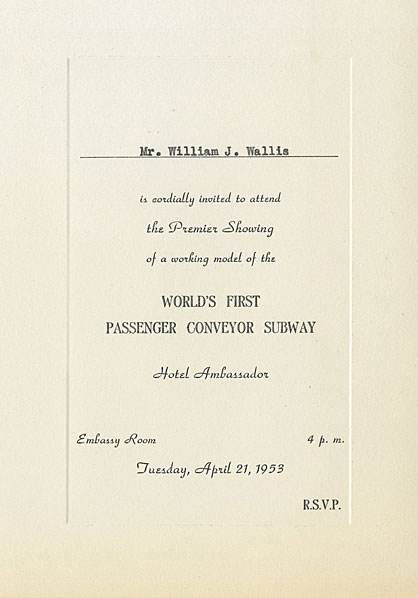
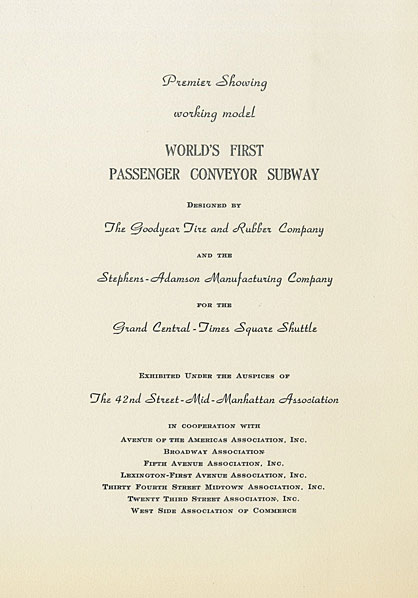
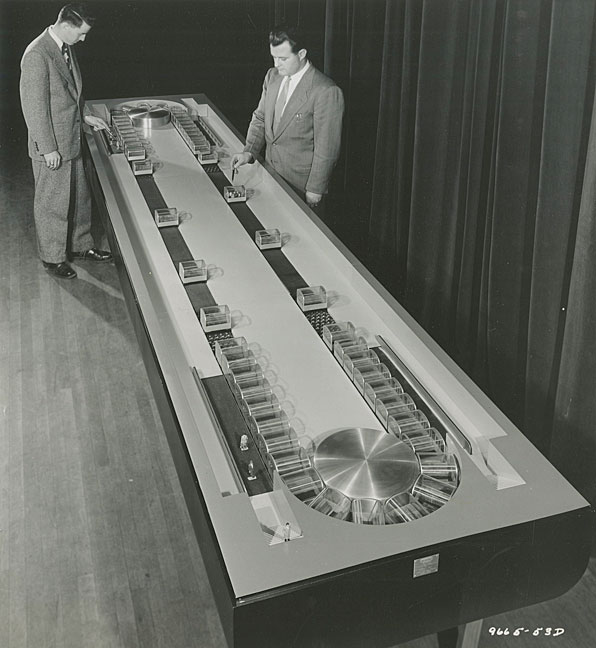
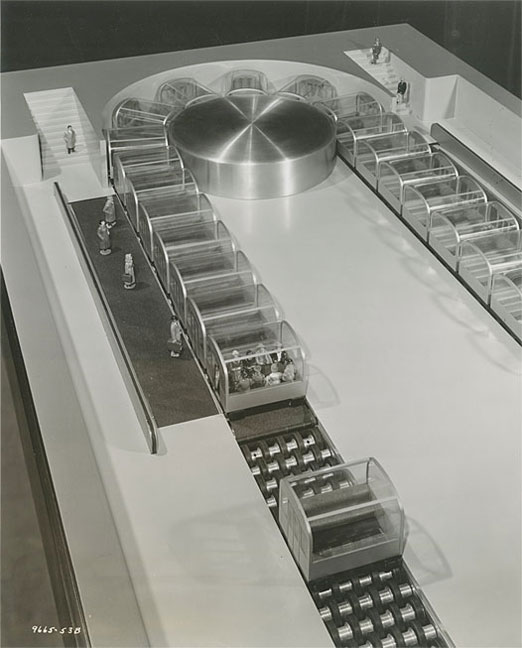
Col. Sidney Bingham, chairman of the New York City Board of Transportation, supported the “Carveyor” system. In 1954 the city awarded a $3.8 million contract to replace the Grand Central/Times Square shuttle with the conveyor belt system, but it was cancelled less than a year later due to high cost.
The “Carveyor” system purported to be a commuter’s dream come true, “imagine a New York subway rider during the rush hours being able to step unmolested, uncrowded into a waiting car and then whisked quietly and swiftly to his destination – no delay, no shoving, no bodily contact – step off at the other end unpushed, unruffled, unhurried.” This is indeed a subway commuter’s dream, but I can’t imagine that the “Carveyor” subway would have solved these issues and been problem-free itself.
